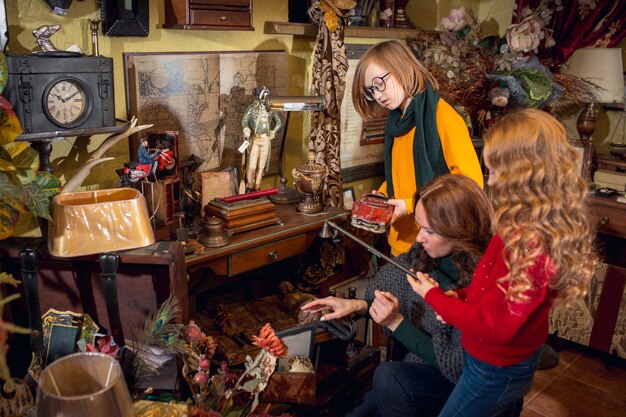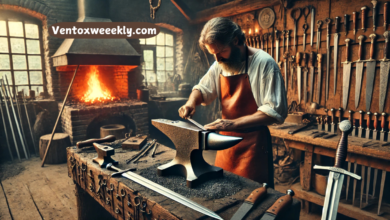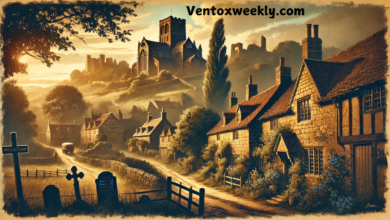The Most Valuable Antiques You Might Have in Your Home

Your home might be a treasure trove of valuable antiques without you even realizing it. From vintage furniture passed down through generations to seemingly ordinary items tucked away in attics or basements, these hidden gems can be worth significant sums. Identifying these pieces not only adds a sense of history to your belongings but can also provide a surprising financial boost.
Here’s a guide to some of the most valuable antiques you might have in your home—and how to determine their worth.
1. Vintage Furniture
What to Look For:
- Handcrafted Details: Look for dovetail joints, intricate carvings, and hand-cut designs, which indicate pre-industrial craftsmanship.
- Labels or Stamps: Pieces with maker’s marks or signatures, especially from iconic furniture makers like Chippendale, Stickley, or Duncan Phyfe, are highly valuable.
- Original Finish: Antique buyers in Long Island prefer furniture with its original patina or finish is often worth more than restored or refinished pieces.
Examples of Value:
- A mid-century modern Eames chair could fetch thousands of dollars.
- A 19th-century mahogany dining table might sell for tens of thousands at auction.
2. Antique Jewelry
What to Look For:
- Unique Craftsmanship: Vintage jewelry often features intricate designs and techniques not commonly used today.
- Precious Materials: High-quality diamonds, gemstones, or gold add value.
- Maker’s Marks: Look for engravings or hallmarks from renowned jewelers like Cartier, Tiffany & Co., or Fabergé.
Examples of Value:
- Art Deco diamond rings from the 1920s can sell for thousands.
3. Rare Books and Manuscripts
What to Look For:
- First Editions: Books that are first printings of classic works often hold significant value.
- Signatures: Autographed copies by authors, especially literary giants like Hemingway or Austen, can skyrocket in value.
- Condition: Books with intact bindings, minimal wear, and original dust jackets are the most desirable.
Examples of Value:
- A first edition of “To Kill a Mockingbird” by Harper Lee can sell for thousands.
- Antique Bibles or illuminated manuscripts can fetch even higher sums.
4. Ceramics and Porcelain
What to Look For:
- Maker’s Marks: Pieces from renowned makers like Meissen, Wedgwood, or Royal Doulton are highly collectible.
- Hand-Painted Designs: Look for detailed, hand-painted patterns, which signify artistry and uniqueness.
- Condition: Cracks and chips can reduce value, but rare pieces in good condition are prized.
Examples of Value:
- A Ming Dynasty vase could sell for millions.
- 18th-century European porcelain figurines often fetch thousands at auction.
5. Coins and Currency
What to Look For:
- Mint Errors: Coins with minting errors, such as double strikes or misprints, are especially valuable.
- Precious Metals: Coins made from gold or silver hold intrinsic value, even without rarity.
- Historical Context: Coins from significant historical periods, like the Roman Empire or the American Revolution, are in high demand.
Examples of Value:
- A 1943 copper penny could be worth over $100,000.
- Ancient Roman coins can range from hundreds to thousands of dollars, depending on rarity.
6. Vintage Electronics and Tech
What to Look For:
- First Editions: Early models of iconic gadgets, like the original Apple Macintosh or Sony Walkman, can fetch high prices.
- Good Condition: Devices that still work and include original packaging are particularly desirable.
- Limited Production Runs: Rare or discontinued models are often highly collectible.
Examples of Value:
- A first-generation iPod in mint condition can sell for several hundred dollars.
- Early typewriters or radios in working condition can be worth thousands.
7. Fine Art and Prints
What to Look For:
- Signatures: Look for artist signatures or markings that indicate authenticity.
- Limited Editions: Numbered prints or lithographs by famous artists like Picasso or Warhol are valuable.
- Original Frames: Retaining the original frame can add to the piece’s value.
Examples of Value:
- A signed print by Salvador Dalí could sell for tens of thousands.
- Oil paintings by lesser-known regional artists might still fetch several thousand dollars.
8. Collectible Toys and Games
What to Look For:
- Condition: Mint-condition toys, especially those in their original packaging, are highly sought after.
- Brand Recognition: Items from iconic brands like LEGO, Barbie, or Matchbox hold significant value.
- Limited Editions: Rare versions or early models fetch the highest prices.
Examples of Value:
- A vintage Star Wars action figure from the 1970s could sell for over $1,000.
- Early Monopoly sets or tin wind-up toys can bring in hundreds to thousands of dollars.
Conclusion
You never know what hidden treasures might be lying around your home. From vintage furniture to antique jewelry and collectible toys, everyday items can hold significant value. Identifying these antiques requires a keen eye, some research, and occasionally the help of an expert.
If you think you might have valuable antiques, consider consulting an appraiser or auction house to learn more about their history and worth. Whether you choose to keep or sell these treasures, understanding their value adds a fascinating layer of appreciation to your belongings.
See Also : Personal Limo Services for Date Nights: Add Romance to Your Evening
FAQs
1. How can I tell if an item in my home is antique?
Look for signs of age, craftsmanship, and materials consistent with the period it might be from. Consulting an expert can also help.
2. Are restored antiques less valuable?
Restoration can lower the value, especially if it alters the original materials or finish. Original condition is typically preferred by collectors.
3. What’s the best way to sell valuable antiques?
Consider working with auction houses, antique dealers, or online platforms specializing in antiques.
4. How can I find out the value of an antique?
Get an appraisal from a certified expert or research similar items sold at auctions.
5. Are family heirlooms always valuable?
Not always, but items with historical significance or unique craftsmanship often hold monetary and sentimental value.




